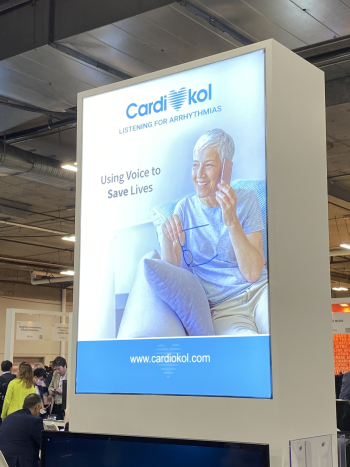There is a science to CES. The show spans several venues between the Las Vegas Convention Center in the north to Mandalay Bay at the southern end of the strip (about 5.5 miles). The complementary shuttles between locations can take unexpectedly long times due to crushing traffic. And while the monorail soars above the city streets, its stations can be a hike from the various exhibition halls. So, the trick is to consolidate meetings, conference sessions, and visits to a single venue per day, preempting the need to travel between locations. Another science is comfortable shoes. Yes, I’m “that guy” wearing track shoes at CES. After years in regular shoes or boots, I threw fashion to the wind and decided to have happy feet at the end of the day.
I spent most of today at the Venetian (yes, I know I just contradicted myself with “most of the day,” but there was a meeting at another venue around noon) where the focus was on ag tech and age tech. John Deere, which first appeared at CES in 2019, hosted the keynote and delivered a remarkable exposition on why it can now be viewed less as ag and construction and more as robotics and artificial intelligence (AI). When you outfit autonomous tractors with 36 cloud-connected cameras that do the work of 6,000 human eyes, you can stake that claim. As for age tech, the focus was less about aging in place and more about thriving in place.
“Aging in place” is a great idea, and designers and tech developers have made impressive strides in recent years, offering solutions ranging from lowering countertops to accommodate people who are wheelchair bound or otherwise sitting while working in the kitchen to placing sensors beneath carpets that can detect gait and falls. And yet “aging” has an almost passive, relinquishing tone; a process over which the subject has no control. (Students of Biblical exegesis may consider Ecclesiastes 12:6 and commentators who suggest those verses are a metaphor for human aging – a decline of facilities over which the subject has no control.) But “thriving in place” – that is a different fox hunt entirely.
A collocated series of panels hosted by Parks Associates featured a session on senior living. Panelists defined their work as striving to ensure health, safety, security, and comfort. These are goals that do not surprise us, but perhaps we might have struggled to articulate them as clearly. Fortunately, the hardware and apps are waiting. Wearables and home-based sensors offer fall detection with emergency notification capabilities. Many take the form of devices that younger users have adopted, thus setting aside the stigma that some seniors may feel when donning a safety alert pendant. Stated differently, when both grandpa and son wear an Apple Watch, no one feels old. At the same time, however, data indicate that younger users are actually adopting smart monitoring devices for the many of the same reasons they want their elders to use them.
A major element of successful adoption, however, remains simplicity and “plug and play” ease of use. The goal is to enable a seamless and easy transition that does not discourage prospective users from using otherwise unfamiliar technologies.
A connected environment can facilitate other needs, too. Panelists emphasized the need to fortify mental health and to ensure that as lifespans get longer, seniors continue to find and express purpose in their lives. Broadband connectivity can enable social connectivity, which can alleviate loneliness. “Isolation” is a lack of social connections. Loneliness refers to the subject’s experience of unfulfilled social needs. A person can be isolated, yet through connectivity, fulfill social needs and not feel lonely. And with that purpose, to not simply age in place, but thrive in place.
On deck: Addressing food waste and protecting at-risk witnesses in criminal proceedings.


